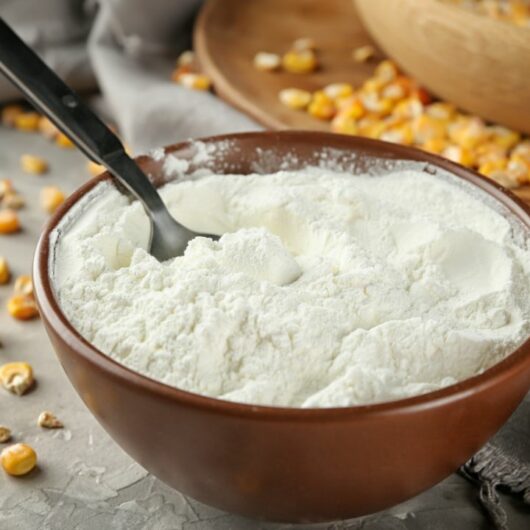Have you ever run out of cornstarch in the middle of cooking and go into panic mode? If you have, then there is no need to worry as there are some fantastic alternatives out there that you may already have in your pantry.
These substitutes are great for everyone, as some may find cornstarch full of too many carbs which can provoke sensitive stomachs.
Here, we have reviewed the various cornstarch alternatives and which ones work best for what you’re cooking.
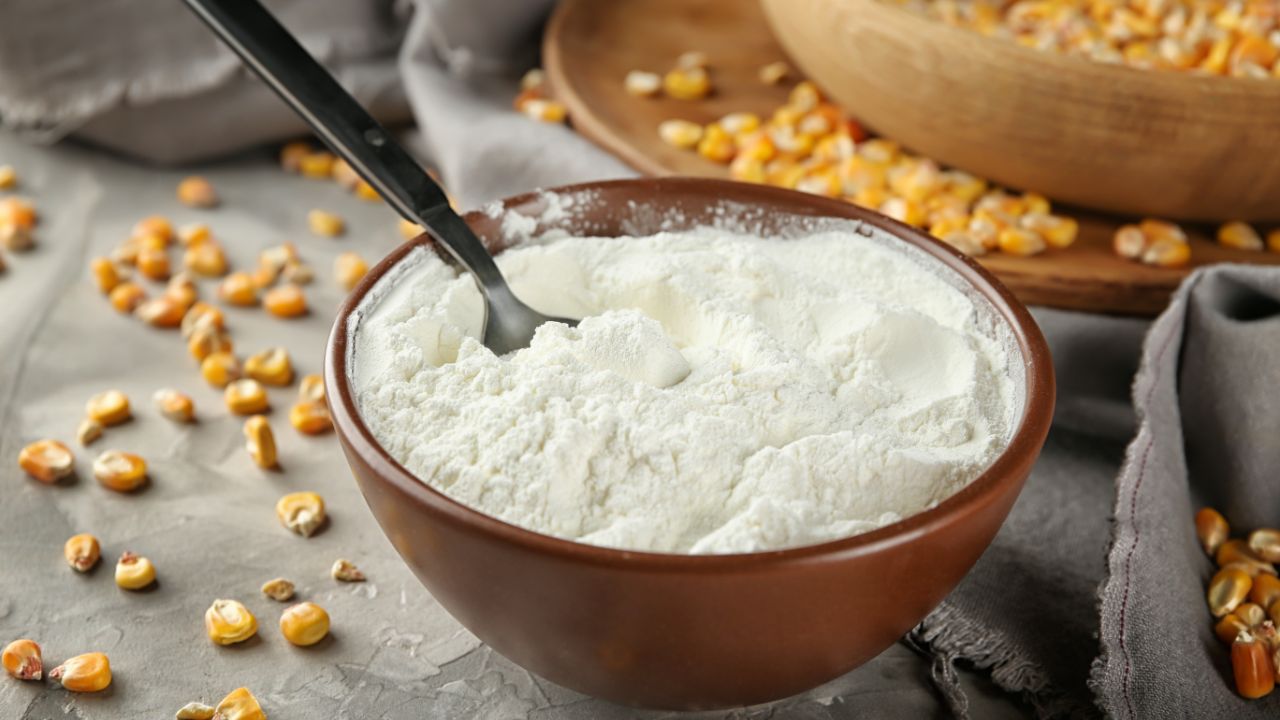
What Is Corn Starch?
Otherwise known as cornflour, corn starch is a carbohydrate that is derived from the corn grain. The starch is obtained from the endosperm of the kernel.
It comes in the form of a white powder and is very high in calories, with little nutritional value. If you’re looking for an alternative as a result, then there will be one for you here.
Cornstarch is made entirely from corn and is therefore gluten-free which makes it a useful pantry staple for many.
What Is Cornstarch Used For?
Cornstarch is commonly used in cooking and baking to help thicken and stabilize foods. Across the world, cornstarch is used to thicken sauces, gravies, glazes, soups, and anything else you can think of that needs it.
Cornstarch Substitutes
1. Rice Flour
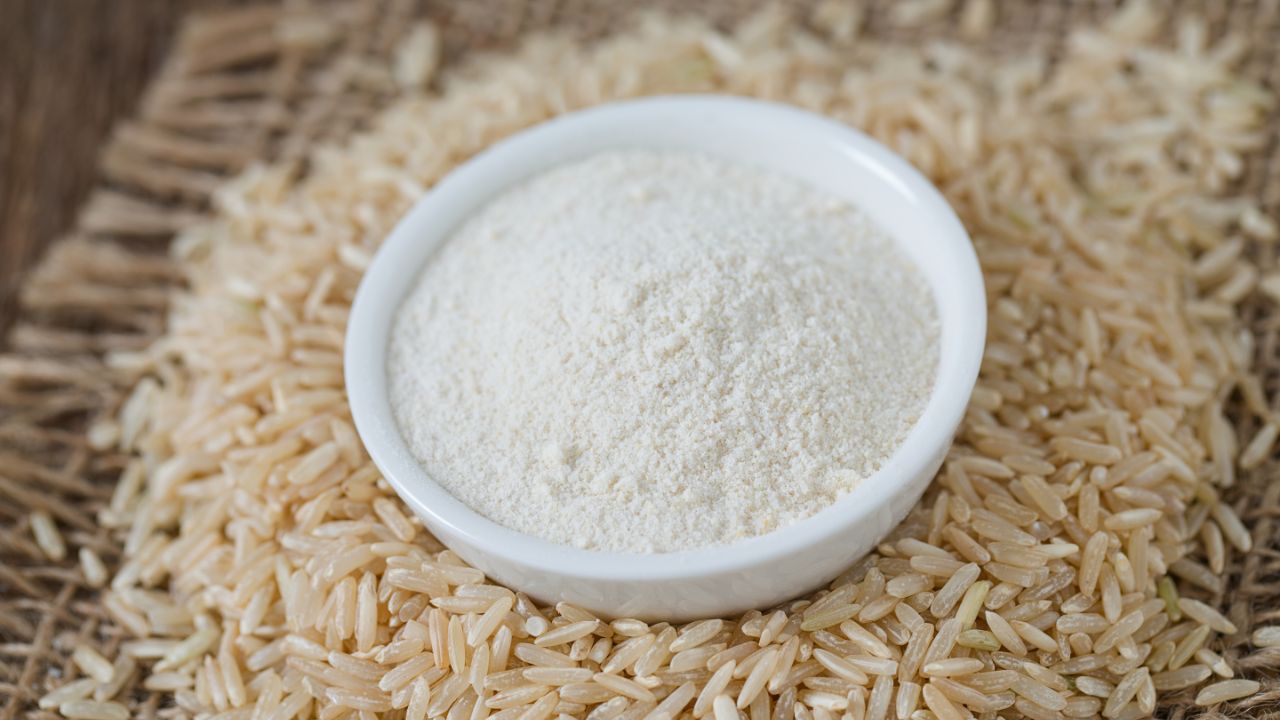
As you might imagine, rice flour is made from very finely ground rice. It is often used as a replacement for wheat flour as it’s naturally gluten-free.
Rice flour is high in nutritional value and contains more protein and fiber than cornstarch so it makes for a much healthier alternative.
This flour is particularly popular in Asain cuisine to create thicker soups, noodles, and desserts. When mixed with water the flour is colorless which can be useful when thickening clear liquids.
In terms of quantities, it is recommended that twice as much rice flour is used compared to the amount of cornstarch required to achieve the desired consistency.
2. Potato Starch
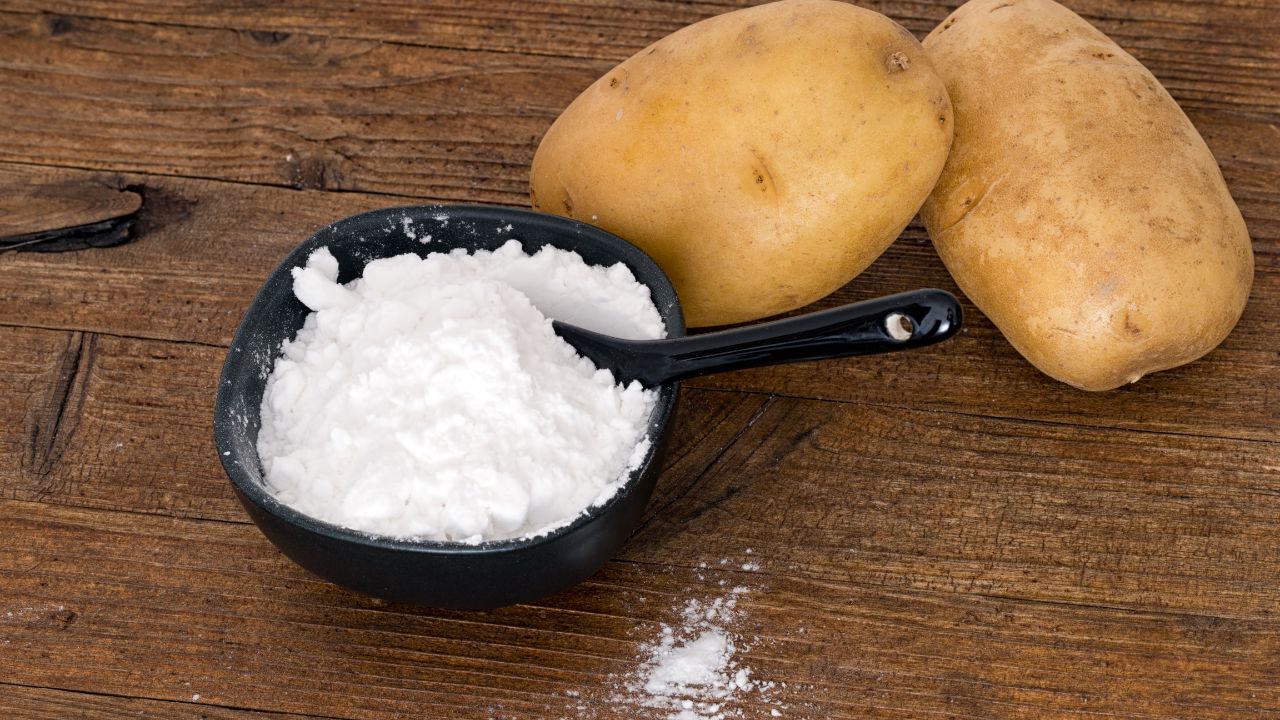
Potato starch is made from the process of crushing potatoes to release their starch content which is then dried into a powder.
The powder has a flour-like consistency and is quite a common ingredient used in cooking, especially as a thickening agent. This starch can be used to thicken soups, gravies, pie fillings, sauces, and stews as it effectively absorbs water.
It should be noted that the starch can break down in extreme heat which means that it may not absorb the moisture properly and perform the required function. For best results, heat the starch gently and add it gradually to any sauces.
As potato starch (see also ‘What Can I Use Instead Of Potato Starch? 5 Amazing Substitutes‘) is also naturally gluten-free it’s often used as a gluten-free form of flour which makes for a great alternative in baking recipes.
3. All-Purpose Flour
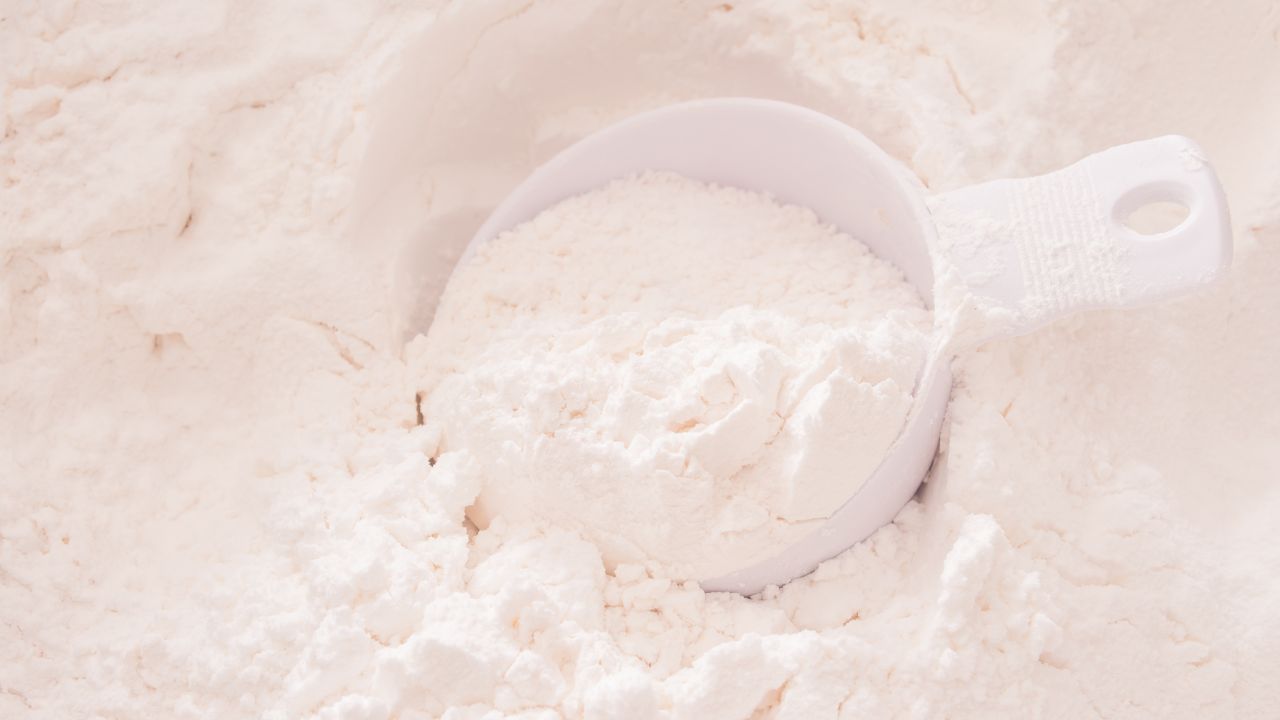
All-purpose flour is a common pantry staple and probably the most likely one you’ll have in your kitchen which can be used in place of cornstarch.
There is no difference in the final product and it can be a lot cheaper and easier to find than some of the other alternatives.
When substituting all-purpose flour for cornstarch follows a two-to-one ratio, this means two cups of flour for every one cup of cornstarch the recipe calls for.
You need to use more flour as it’s not as thick as cornstarch. If you’re using it in a sauce, then add a little at a time to keep it from getting too thick too quickly.
4. Arrowroot Powder
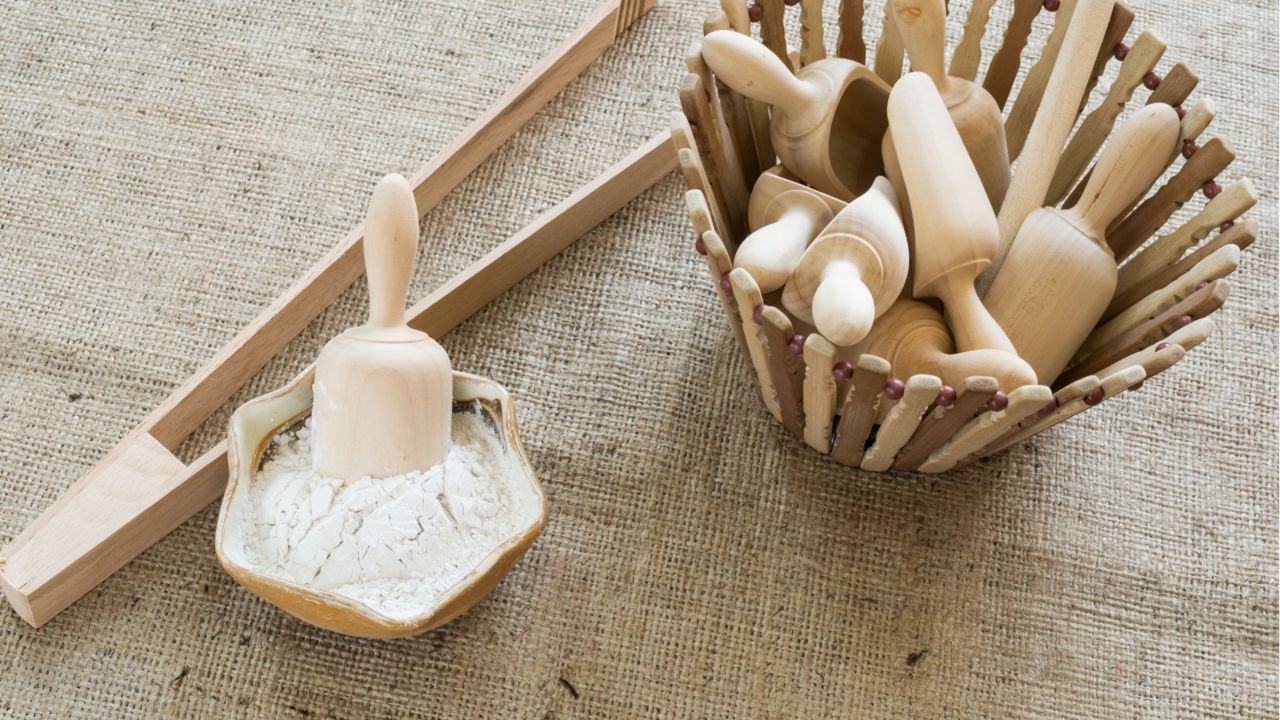
Arrowroot powder is one of the more uncommon ingredients used in cooking. If you’ve not come across it before, it is a starchy flour made from the roots of the Maranta genus of plants found in tropical regions of the world.
As the name suggests, the roots of the plant are used to make the powder. They are dried and ground into a fine powder.
Many people prefer using arrowroot as it’s more natural and contains more fiber than cornstarch. When mixed with water it forms a clear gel which is great for thickening liquids.
Other uses of this powder include replacing some dairy products in plant-based baking such as in cookies or cakes.
Twice as much arrowroot powder as cornstarch is recommended when using this replacement product to achieve similar results. Arrowroot is also gluten-free and can be used as a gluten-free alternative to flour.
5. Xanthan Gum
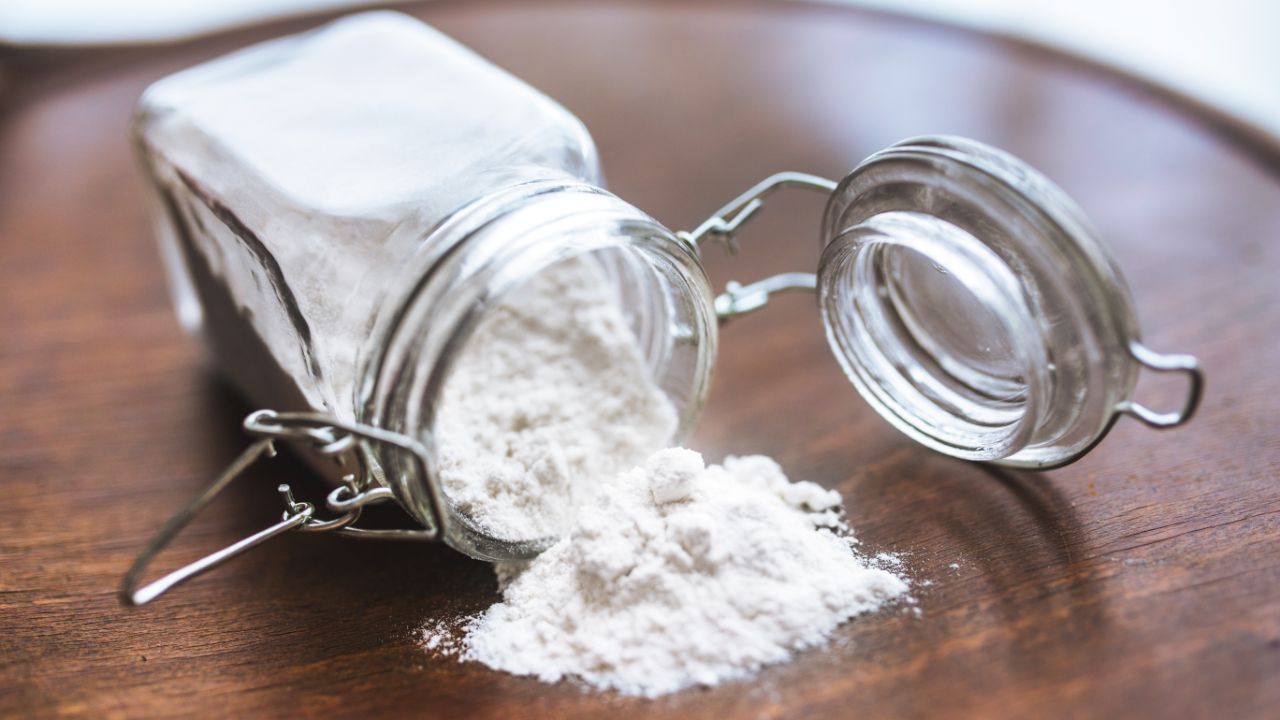
Xanthan Gum is a popular food additive that is usually used as a thickening agent or food stabilizer.
Derived from sugar, xanthan gum can come from many different sources such as wheat, corn, soy, and dairy. The sugar is fermented with a bacteria called Xanthomonas campestris.
Small amounts of xanthan gum can be used to thicken large quantities of fluids. As well as thickening, the powder can also help keep solid particles in suspension which is seen in products like bottled salad dressings.
Often xanthan gum is used in gluten-free baking as a replacement for the sticky effect that gluten creates in doughs. Popular uses also include stabilizing non-dairy products such as ice creams, sauces, and milk.
Only small amounts of xanthan gum are needed in recipes which should be added slowly. If you use too much then the dish or liquid may become slimy in texture.
6. Tapioca Flour
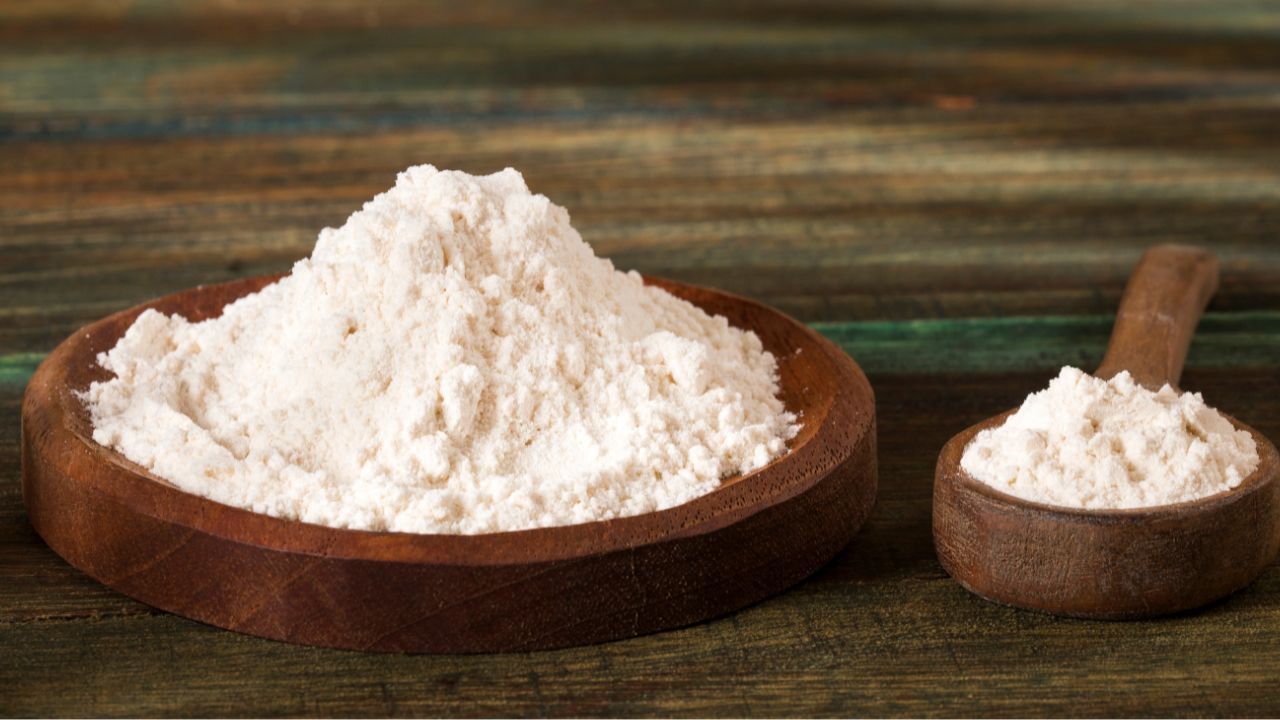
Although it’s known as tapioca flour, this flour is made by grinding cassava roots, which are extracted and dried to gain their starchy liquid.
Cassava is a root vegetable that’s found in South America. This flavorless flour mixes quickly and is an effective thickening agent which works well in homemade puddings, cookie dough, sauces, and gravies.
Tapioca flour is superior in thickening ability compared to potato starch and arrowroot powder.
Also naturally gluten-free it can be used in a variety of gluten-free cooking and comes in many forms such as flour, pearls, and flakes. It is also useful for those with diabetes or prediabetes as it has a lower glycemic index than wheat flour.
The recommended substitution is one tablespoon of cornstarch with two tablespoons of tapioca flour.
7. Wheat Flour
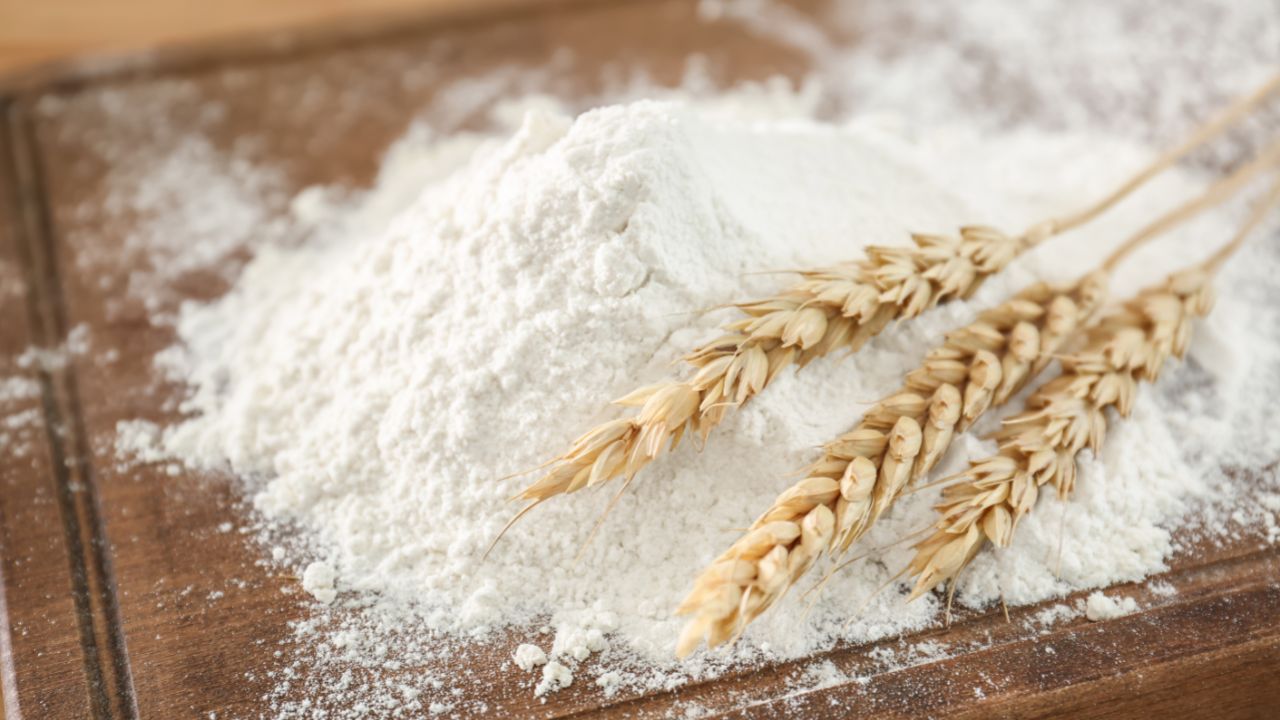
Wheat flour comes from the process of grinding the whole wheat kernel, which is why it’s often called whole wheat flour.
Using the whole kernel produces a flour that is slightly darker in color than all-purpose flour and one that is strong and nuttier in flavor. The most important aspect is that it contains more nutrients and fiber than all-purpose flour.
Before using wheat flour as a substitute for cornstarch, it must be mixed with cold water to make a paste, this helps to avoid clumps forming.
Typically, you’ll need to use twice as much wheat flour compared to cornstarch to thicken mixtures. Wheat flour produces a stronger taste that is often described as ‘earthier’ than cornstarch.
8. Glucomannan
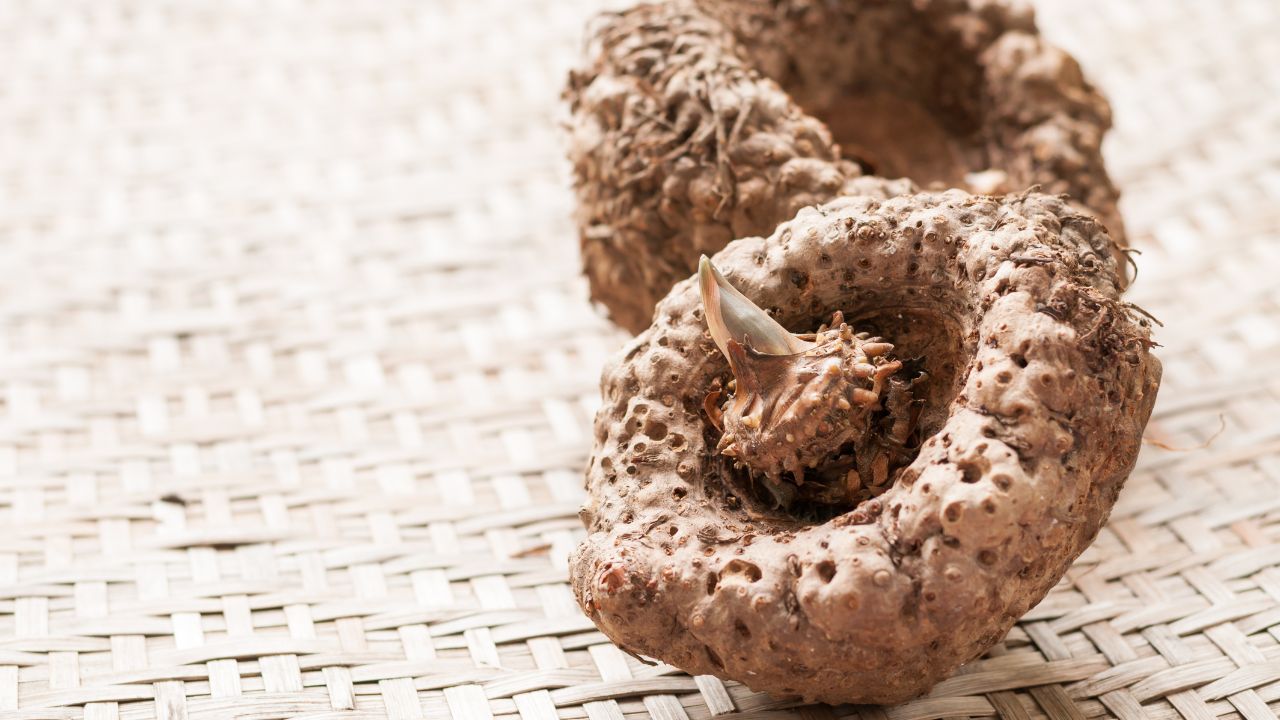
Glucomannan is a dietary fiber made from the root of the konjac plant or elephant yam. It has been used in food and medicine in Asian cultures for centuries.
Typically, it’s used to bulk up foods and is also popular in diet foods such as pasta and noodles as it doesn’t contain any calories or carbohydrates.
Glucomannan is also a probiotic, which can help nourish your gut with healthy bacteria contributing to an overall healthy digestive system. Other health benefits of the fiber include its ability to lower levels of bad cholesterol by up to 10%.
It’s best used as a thickening agent or in baking. As the consistency is more of a gel than a powder it can’t be used to make breadcrumbs so avoid using it if you’re trying to deep-fry something.
Mix with a little cold water for best results as it thickens at low temperatures.
It is recommended that a quarter of a teaspoon of glucomannan is needed for every two teaspoons of cornstarch.
9. Ground Flaxseeds
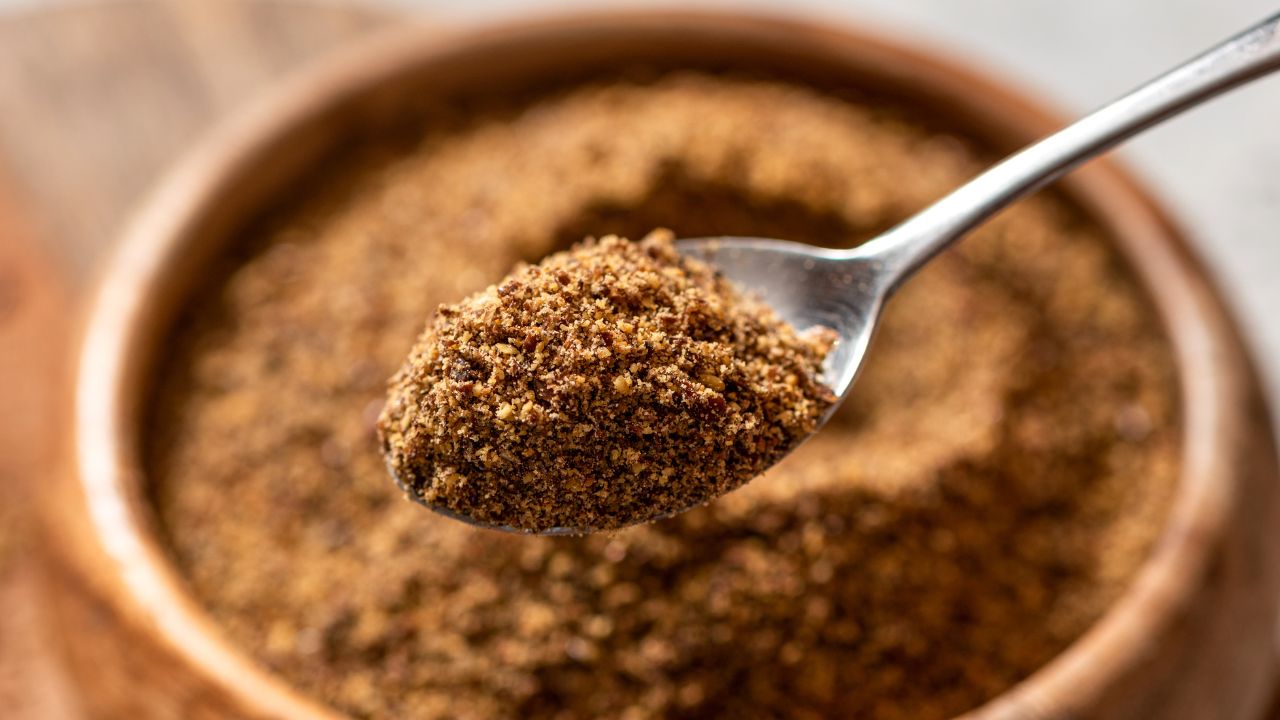
Ground flaxseeds or flaxseed mills are packed full of nutrients that have a plethora of health benefits, these are easier to digest in ground form meaning you get all the benefits of the nutrients.
Flaxseeds are high in fiber and omega-3 fatty acids which are beneficial for digestive health and can help to lower cholesterol levels.
The seeds come from the flax plant, likely originating in Egypt. The seeds are ground and used in a variety of different ways, including in many healthy food settings.
In vegan baking, they are often used as an egg substitute due to their absorbent properties. Their texture means they are great for binding ingredients together too.
As a replacement for cornstarch, ground flaxseed can also be used as a thickener. To do this, use around one tablespoon of ground flaxseed with four tablespoons of water for every two tablespoons of cornstarch.
10. Sorghum Flour
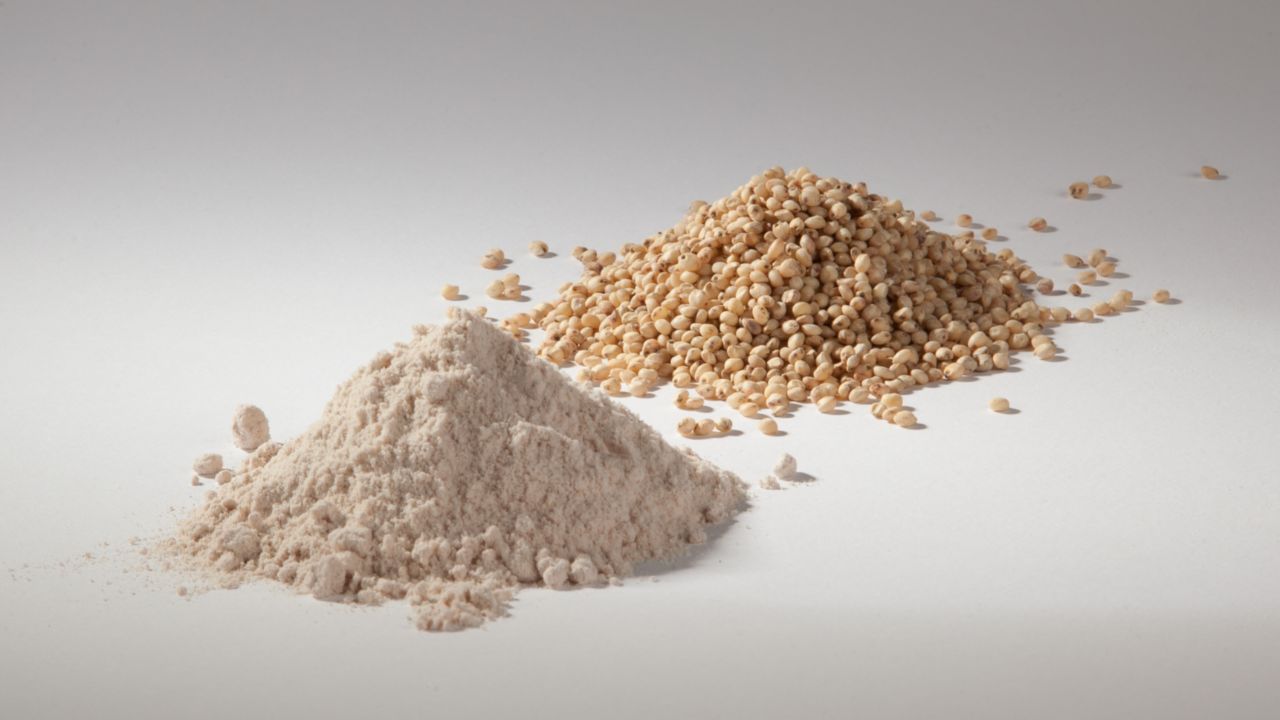
Another less common alternative is sorghum flour, gluten-free flour with a sweet, mild flavor that is smooth when used in cooking.
The flour comes from ground sorghum grains which are high in protein, antioxidants, and fiber. Sorghum flour is also an excellent thickener for soups, stews, and chowders.
Naturally, gluten-free sorghum flour is commonly used to make gluten-free cakes, bread, and baked goods due to its texture and density which can be compared to wheat flour.
11. Psyllium Husk
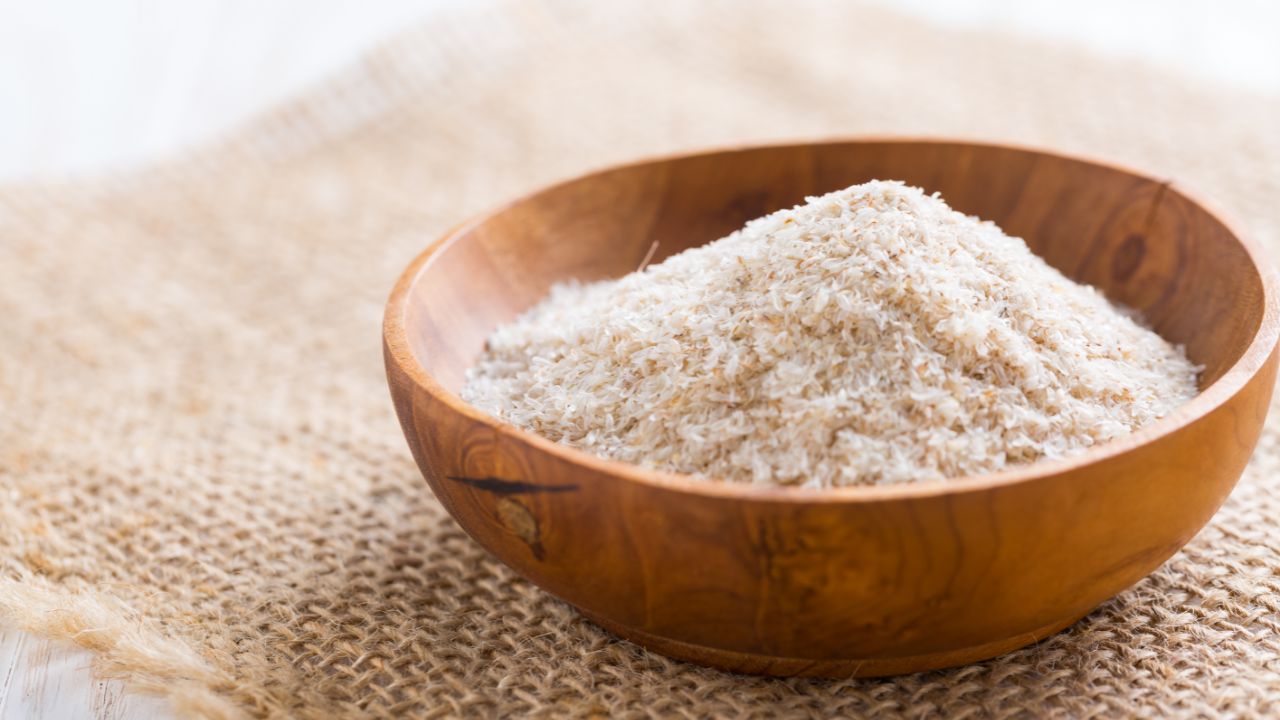
Psyllium Husk is a form of fiber made from husks of the Plantago ovata plant’s seeds and is known as a bulk-forming laxative. It soaks up the water in your digestive system which makes it popular for those wanting to improve their digestive health.
The best use of the powder is to bake with it, as it’s a thickening and binding agent that can also enhance the texture of foods.
Small amounts of the powder are needed to create a chewy texture for a delicious loaf of bread or pizza crust. It isn’t great when used as a substitute for flour, but it more than does the job when replacing cornstarch.
Use psyllium husk sparingly, you should only need around two teaspoons.
12. Guar Gum
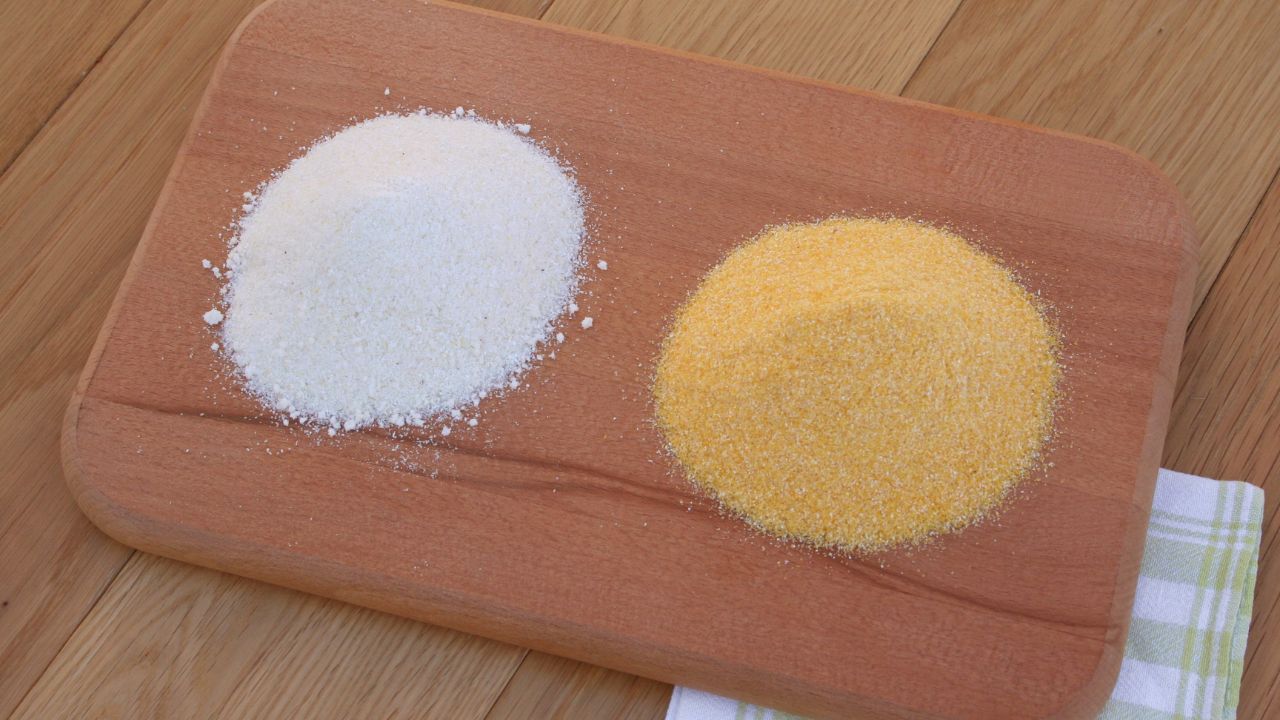
Guar Gum is made from a type of legume called guar beans found in Northern India and Pakistan.
The beans are dehusked, hydrated, milled, and ground into guar gum ready for consumption. Once ground it resembles a fine, white/yellow powder.
The gum is used in cooking as a thickening, stabilizing, and emulsifying agent which works similarly to cornstarch.
It is highly nutritious as well as high in fiber and very low in calories, which is why it is considered to be a healthy food additive compared to cornstarch.
Guar gum can be used in place of cornstarch to thicken frozen foods or pre-made meals that are going to be frozen for later use as it contains compounds that prevent the formation of ice crystals.
Due to the strength of this thickener, small amounts should be used, one quarter of a teaspoon should be enough to start you off. Increase as desired.
13. Almond Flour
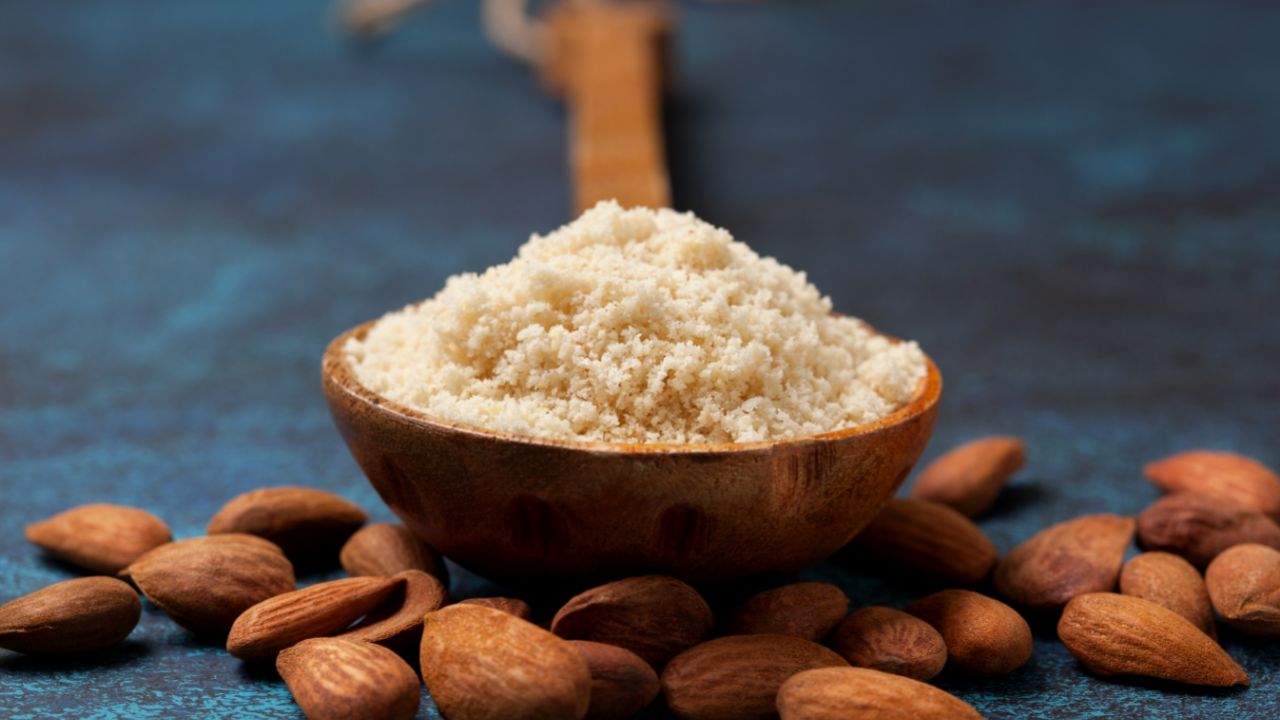
Unsweetened almond flour comes from grinding almonds into a flour consistency.
Almond flour is perfect to use in place of cornstarch when baking sweet dishes as it has a natural flavoring that pairs well with cakes, cookies, muffins, and the like.
One tablespoon of almond flour is enough to substitute one tablespoon of cornstarch.
Frequently Asked Questions
What Is A Healthy Cornstarch Substitute?
The most popular, healthy alternative to using cornstarch in your recipes includes arrowroot flour, rice flour, and sorghum flour.
Conclusion
Here we have reviewed the most common alternatives to use in place of the common thickening agent, cornstarch.
This includes gluten-free options, nutritious options, and those that are perfect for vegan cooking. We hope you found this article interesting and informative and have a better understanding of how to replace cornstarch in the kitchen.
- 15 Traditional Greek Breads - July 31, 2023
- 30 Delicious And Gluten-Free Cookie Recipes - July 29, 2023
- 30 Of The Best European Desserts - July 29, 2023

